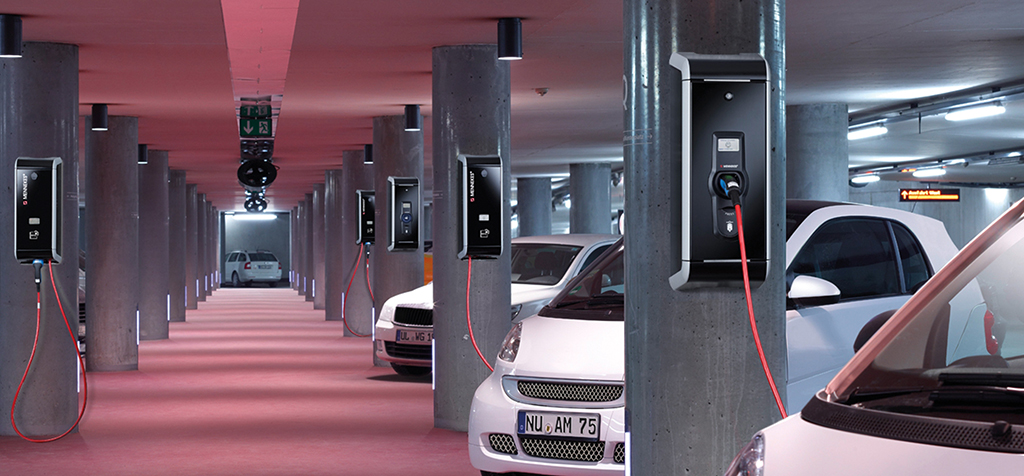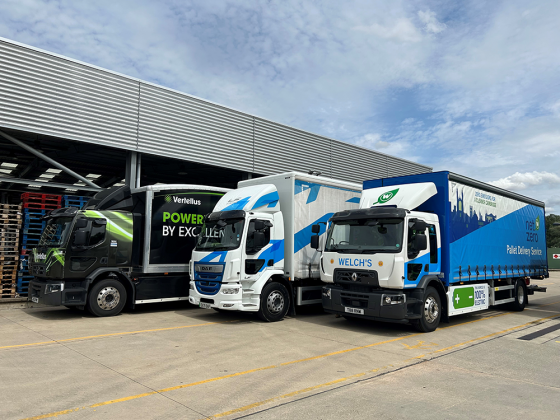Charging considerations for electric vehicles

When driven, electric vehicles are zero-emission and greatly benefit air quality. But when they are charging, the ‘upstream’ emissions can vary, depending on where the electricity comes from and what time it is. Matthew Trevaskis, head of electric vehicles from the Renewable Energy Association, explains further
Many EVs and PHEVs have been adopted by company car drivers and fleets, incentivised by lower operating costs and, especially for company cars, low Benefit-in-Kind rates linked to the low CO2 rating. But the real-world CO2 from these vehicles largely depends on the electricity used to charge them and, in the case of PHEVs, on what proportion of their miles are driven electrically.
Every ‘electric mile’ is zero emission at the point of use, improving air quality, but the upstream emissions can vary, depending on the source of the electricity, such as a solar panel array or via the grid. Emissions can also vary depending when they are charged.
Whilst a robust and accessible public charging infrastructure, especially consisting of rapid chargers along major routes, is required for increasing the uptake of electric cars in particular (as compared to vans) it is worth remembering that the vast majority of recharging of all vehicles is normally done at just one or two ‘private’ locations; at home and the workplace.
Peaks and lows
Energy production and supply is not constant throughout the day, with significant peaks of demand in the early evening, especially in winter, as people arrive home and begin cooking dinner. There are other peaks on weekday mornings as the working day gets underway and industry and commerce picks up.
As demand peaks, the carbon intensity of that energy generally increases as dirtier generation is fed into the grid. With the healthy increase in the amount of wind and solar power on the grid there are also times of ‘overcapacity’ when it is desirable to charge EVs to make use of power that might otherwise have to be turned off or ‘curtailed’ – meaning that they are not generating to their full potential.
This can be quite localised and can result in, for example, high levels of solar energy on summer weekend afternoons when there is very little industrial or commercial activity. Charging during these times, often without any significant impact on a vehicle’s usage or flexibility, can reduce the ‘upstream’ carbon impact significantly.
Charging of an EV (or PHEV) should primarily be carried out using a ‘proper’ charging point. This is technically referred to as ‘Mode 3’ charging, meaning that they are ‘smart sockets’ that check the connection and tell the vehicle how much power is available. This provides safer and faster charging since they are installed on a new, dedicated circuit.
There are grants available from the Office for Low Emission Vehicles (OLEV) for domestic and workplace charging through the Electric Vehicle Homecharge Scheme (EVHS) and Workplace Charging Scheme (WCS) respectively. Some vehicle manufacturers also subsidise the cost of home charging points. It should be noted that the WCS is for fleets and commuters, not customers, so retail and hospitality sites cannot offer them for such use.
A familiar plug
Evidence suggests that the uptake of Mode 3 charging points lags far behind the number of vehicles being registered. In part this is due to many vehicles being supplied with a ‘granny’ or ‘EVSE’ (Electric Vehicle Supply Equipment) cable fitted with a familiar ‘3-pin’ plug for use with a standard domestic socket.
The intention of these is as Occasional Use Cables where no other option is available, but a layperson will often consider it to be suitable for regular use. Many vehicle dealers also do not understand the implications of either recommending or, by omission, not discouraging the use of these cables as the primary charging method, despite the condition of the OLEV Plug-in Car/Van Grants to advise about safe recharging. It is often seen as a barrier to the sale of the vehicle to ‘complicate’ the process further – and add cost.
Whilst these plugs are very familiar to novice adopters, there are significant issues with using them, notably ensuring correct earthing of the vehicle body for safety, especially when charging outdoors, and the potential to overload old or sub-standard wiring from the additional significant draw, sharing a circuit with many other sockets.
Because of this, EVs and PHEVs have to slow down the charge to, typically, 10 Amps/2.3 kilowatts as a maximum (although this still may not be safe) and is less than a third of what they are often capable of achieving.
The length of time needed for a full charge can then be significantly extended which can cause further issues with house wiring.
Economy 7
Domestic customers in an area without mains gas and relying on electric storage heaters may already have a two-rate energy tariff (colloquially known as ‘Economy 7’ after the first such scheme in the 1970s) giving a cheaper energy rate for a number of hours overnight, and are usually aware that all electrical load overnight is cheaper and will often ‘time shift’ their EV charging anyway.
Other customers are not required to take a tariff to encourage them to charge their EV overnight. Because their energy is the same price 24/7, many commuters will begin charging their vehicle the moment they arrive home. This unnecessarily adds to the peak demand on the grid and may lead to excessive demand if a cluster of vehicles develops in a neighbourhood.
Charging impacts
It also poses a ‘trilemma’ for the choice of charging method. From a 3-pin ‘granny’ cable, at the slowest charge rate, a PHEV may take several hours, stretching across the whole evening’s peak demand and an EV, with a larger battery, may extend its charge throughout the night.
A Mode 3 charging point, which increases the charge rate to around 3.3kW – 3.6kW or even 7kW, will shorten the charge duration but also ‘concentrate’ it into the evening peak which, from the power generation and local grid’s perspective, may be even worse. Neither of these is desirable, nor scalable, to widespread uptake of EVs.
The use of a Mode 3 charging point, crucially in combination with an element of time delay which may be incorporated into the charging point, by use of a timer function as built in to many new vehicles or potentially, as being trialled, via an external signal from the grid or energy supplier, can shift the charging into an ‘off-peak’ period, such as the middle of the night when there is little demand.
This can avoid overload on the local grid; reduce the carbon intensity of the energy consumed; allow greater amounts of renewable energy on the grid; and level out some imbalance between energy supply and demand.
What can fleets do?
Fleet operators could help by ensuring that their vehicles primarily charge from proper charging points and engage their drivers to better understand the impacts of when and how they charge even if there is no direct financial benefit.
There is also a duty of care advantage to ensuring a proper charging point, installed to the latest Code of Practice, is available to drivers both at home and at any work place or site.
Where companies are promoting or encouraging the use of EVs or PHEVs for commuters, they should (re)examine the opportunity to install their own renewable generation, such as a solar array on their roof, which can be dimensioned to meet the demand of charging their fleet – especially commuter vehicles that will generally be present throughout the peak output.
Managed charging at work can also allow many more vehicles to be charged without straining the supply to the building.






